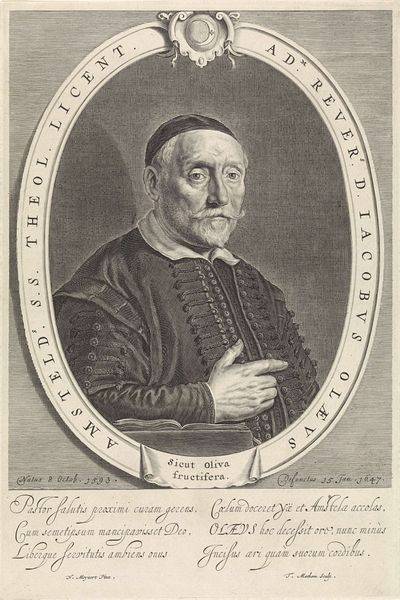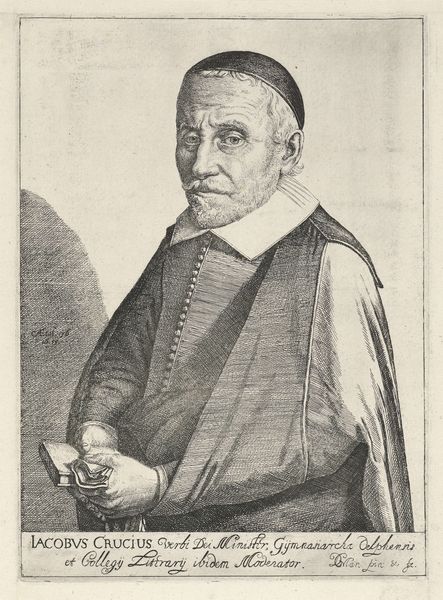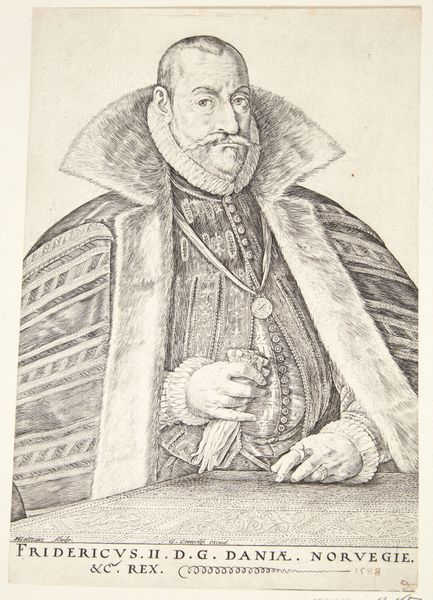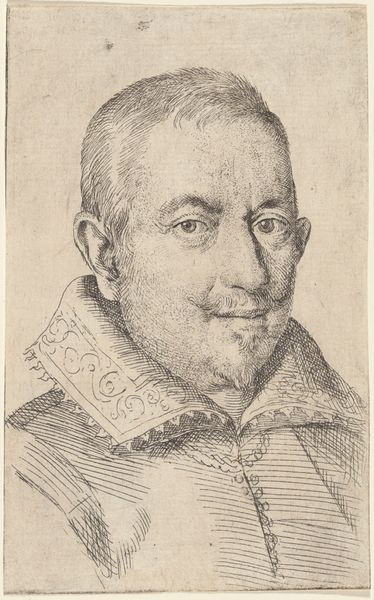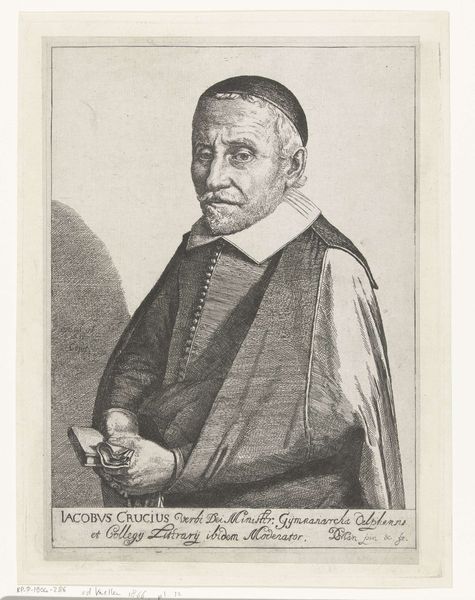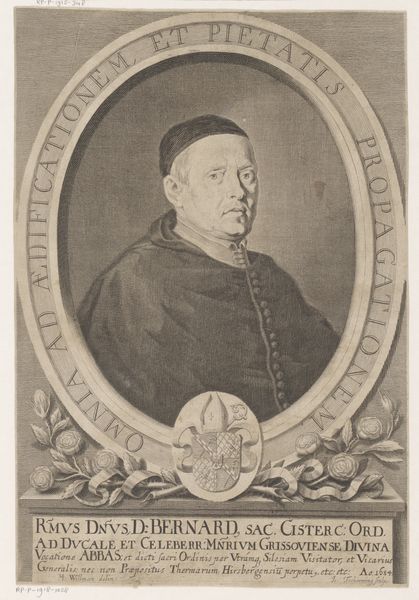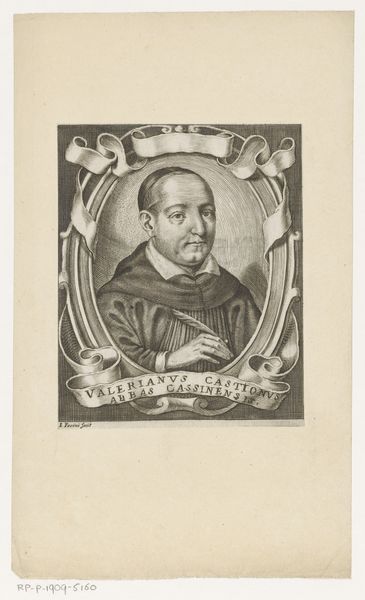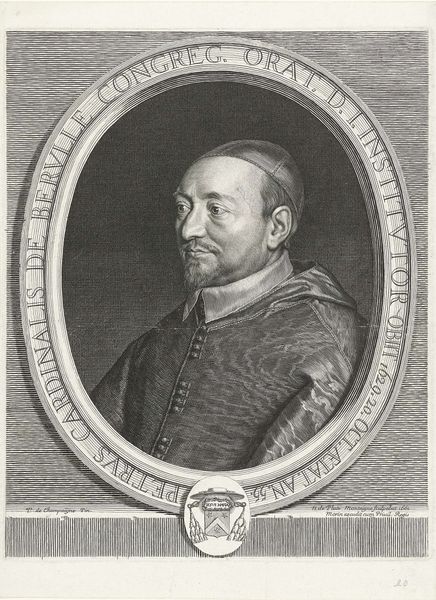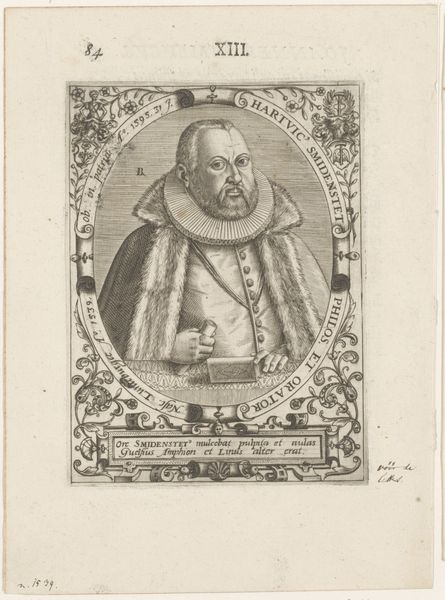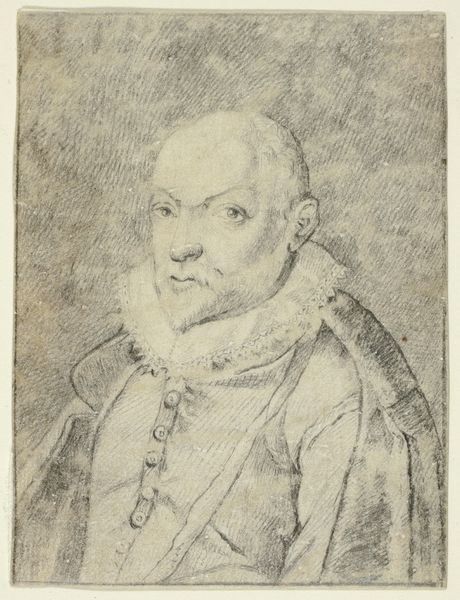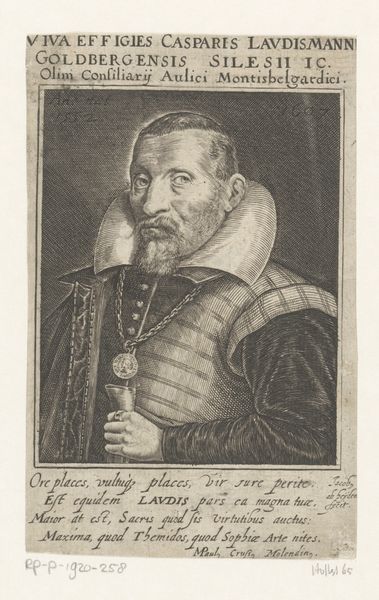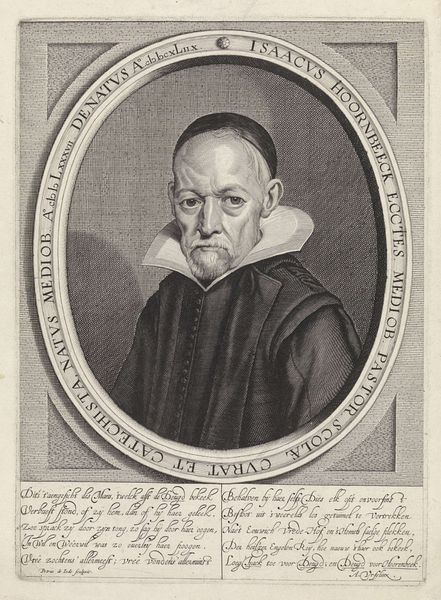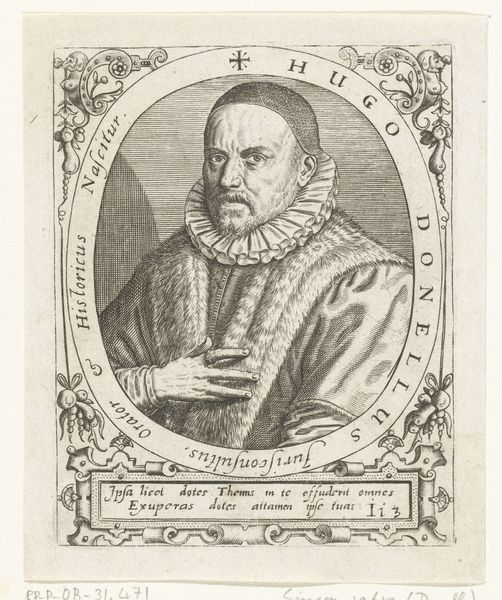
drawing, pencil
#
portrait
#
drawing
#
baroque
#
dutch-golden-age
#
pencil
#
portrait drawing
Dimensions: 288 mm (height) x 191 mm (width) (bladmaal)
Curator: Here we have a portrait drawing of Jacob Oly, or Oleaus, created by Theodor Matham sometime between 1605 and 1676. The artwork resides here at the SMK, the Statens Museum for Kunst. Editor: Immediately, I’m struck by the meticulous detail achieved with what appears to be simple pencil on paper. There’s an incredible textural contrast between the softness of his beard and the sharp definition of his doublet. You can almost feel the weight of the material. Curator: Absolutely. Matham's skill in rendering the tactile qualities of fabrics really elevates the portrait. He wasn’t just depicting a face, he was showcasing a status conveyed through materials. Think about the time and labor embedded within the making of that doublet, a testament to Dutch Golden Age prosperity and access to such fabrics and tailors! Editor: It's intriguing how Matham used such delicate pencil strokes to construct an image of such controlled affluence. He's cradling his right hand with his left—the hands, though, feel unresolved, almost ghostlike. Perhaps they denote an uncertainty or vulnerability beneath the exterior display. Curator: That's a lovely observation. The soft hatching around his face gives a sense of approachability, a hint of melancholy even, despite the rigid collar and neatly trimmed moustache. It makes you wonder what Jacob Oly, whoever he was, was really thinking behind that formal facade. There's a beautiful, yet simple quality to the piece. No gold leaf, no crazy paints, just some paper, a pencil, and artistic skill. Editor: Exactly. The accessibility of the materials, combined with the intense skill applied to them, says a lot about how artists were viewing—and recording—the rise of this merchant class during this period. This seemingly simple drawing encodes wealth and aspirations while retaining a sense of humanness in its subject. Curator: I agree, this humble portrait, born of graphite and paper, manages to speak volumes about a man, a time, and a society driven by both prosperity and its inevitable fragility. Editor: Indeed, it makes me think differently about the relationship between drawing and social identity during that period. The artwork really challenges our preconceptions of both labor and its social context.
Comments
No comments
Be the first to comment and join the conversation on the ultimate creative platform.
